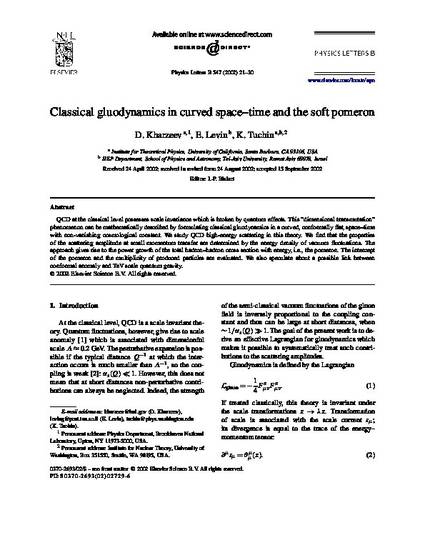
Article
Classical gluodynamics in curved space-time and the soft pomeron
Physics Letters, Section B
(2002)
Abstract
QCD at the classical level possesses scale invariance which is broken by quantum effects. This "dimensional transmutation" phenomenon can be mathematically described by formulating classical gluodynamics in a curved, conformally flat, space-time with non-vanishing cosmological constant. We study QCD high-energy scattering in this theory. We find that the properties of the scattering amplitude at small momentum transfer are determined by the energy density of vacuum fluctuations. The approach gives rise to the power growth of the total hadron-hadron cross section with energy, i.e., the pomeron. The intercept of the pomeron and the multiplicity of produced particles are evaluated. We also speculate about a possible link between conformal anomaly and TeV scale quantum gravity.
Keywords
- tellurium,
- vanadium,
- amplitude modulation,
- article,
- conformation,
- cosmological phenomena,
- density,
- energy,
- gravity,
- mathematical analysis,
- molecular dynamics,
- particle size,
- quantum chemistry,
- quantum mechanics,
- scale up,
- space,
- time,
- vacuum
Disciplines
Publication Date
2002
Publisher Statement
This is an open access article distributed under the Creative Commons Attribution License, which permits unrestricted use, distribution, and reproduction in any medium, provided the original work is properly cited.
Citation Information
Dmitri Kharzeev, Eugene Levin and Kirill Tuchin. "Classical gluodynamics in curved space-time and the soft pomeron" Physics Letters, Section B Vol. 547 Iss. 1-2 (2002) Available at: http://works.bepress.com/kirill_tuchin/10/
